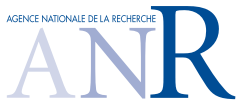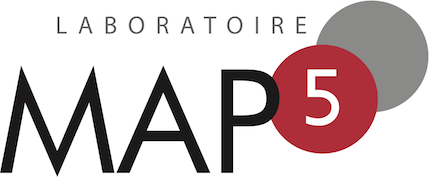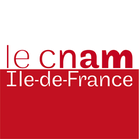Set Estimation: a Bridge between Spatial Statistics and Stochastic Geometry
Estimation d’ensembles : un pont entre les statistiques spatiales et la géométrie stochastique
(see the schedule local time below)
(Marseille, France local time) https://www.thetimezoneconverter.com
|
Scientific Committee
Comité scientifique Jean-François Coeurjolly (Université Grenoble Alpes) |
Organizing Committee
Comité d’organisation Christophe A. N. Biscio (Aalborg University) |
|
Set estimation appears in many applied fields, for instance in cosmology, imaging, biology, environmental science, sea waves modeling, big data. Many mathematical issues arise andare studied by both random geometry and spatial statistics communities. The purpose of this meeting is to gather these two communities around this common question. The considered sets are obviously multidimensional. They can be either random or the observation of a random phenomenon. Among others, we can name the support of multidimensional densities, realizations of point processes, Gibbs or Boolean models, excursion sets of random fields, discrete or continuous, level sets or high dimensional data. Regarding estimation, it could include inference for the localization of the set, its frontier or its extremal points, its shape, its volume or any other geometrical functional. The study of these objects naturally leads to parametric or non-parametric estimation issues and the need for testing procedures (Gaussianity, isotropy,…).
By set estimation, we mean the study of an inverse statistical problem to build consistent inference procedures and associated algorithms, starting from eventually sparse observations. Talks will be devoted to this question by firstly presenting the set of interest and its properties then the methods developed for its estimation.The program will include talks directed toward theory and applications. |
L’estimation d’ensembles intervient dans de nombreux domaines, par exemple, en cosmologie, imagerie, biologie, science de l’environnement, modélisation de la houle marine, données massives. De nombreuses questions mathématiques émergent, et sont étudiés à la fois par les communautés géométrie aléatoire et statistique spatiale. L’objectif de cette rencontre est de rassembler ces deux communautés autour de cette question commune. Les ensembles que nous avons en vue sont naturellement multidimensionnels. Ils peuvent être soit aléatoires, soit les observations de phénomènes aléatoires. Citons par exemple les supports de densité multivariées, les réalisations de processus ponctuels, de modèles de Gibbs ou booléens, les excursions d’un champ aléatoire, discret ou continu, ses ensembles de niveau ou encore des données de grande dimension. Quant à l’estimation, elle peut inclure l’inférence statistique de la localisation de l’ensemble, sa frontière ou ses points extrémaux, sa forme, son volume ou tout autre fonctionnelle géométrique. Etudier de tels objets conduit naturellement à des questions d’estimation, paramétrique et non paramétrique, et à la construction de test d’adéquation de modèle (gaussianité, isotropie,…).
Nous entendons l’estimation d’ensembles comme l’étude d’un problème statistique inverse qui a pour objectif la construction de procédures d’inférence consistantes et les algorithmes associés, à partir d’observations éventuellement sparse. Les exposés seront consacrés à cette question en présentant d’abord l’ensemble d’intérêt et ses propriétés puis les méthodes mises en place pour son estimation. |
|
Monday 8 of March (PM)
Chairman: Jean-François Coeurjolly (Université Grenoble Alpes) 2.00 – 2.40 (+5 questions) Georg Lindgren (Lund University) Waves and other stochastic objects — Models and computation (abstract) (slides) (video) 2.45 – 3.15 (+5 questions) 3.35 – 4.05 (+5 questions) 4.10 – 04.40 (+5 questions) |
Thursday 11 of March (AM)
Chairwoman: Anne Estrade (Université de Paris) 9.30 – 10.10 (+5 questions) Georg Lindgren (Lund University) Waves and other stochastic objects — Modeling local characteristics (abstract) (slides) 10.15 – 10.45 (+5 questions) Nicolas Chenavier (Université du Littoral) Random aggregates and random forest based on the IDLA protocol (abstract) (slides) Break 15 minutes 11.05 – 11.35 (+5 questions) D. Yogeshwaran (Indian Statistical Institute Bangalore) Poisson process approximation under stabilization (abstract) (slides) 11.40 – 12.10 (+5 questions) Evgeny Spodarev (Ulm University) Heavy-tailed random fields with long range dependence (abstract) (slides) 12.15-12.45 (+5 questions) |
Chairman: José R. Leon (Universidad de la República, Montevideo, Uruguay)
2.00 – 2.30 (+5 questions)
Raphaël Lachièze-Rey (Université de Paris)
Nodal sets variance for Gaussian stationary processes (abstract) (slides)
2.35 – 3.05 (+5 questions)
Valentina Cammarota (University of Roma La Sapienza)
No repulsion between critical points for planar Gaussian random fields (abstract) (slides)
Break 15 minutes
3.25 – 3.55 (+5 questions)
Eddie Aamari (Université de Paris)
Statistical Query Complexity of Manifold Estimation (abstract) (slides)
4.00 – 4.30 (+5 questions)
Victor-Emmanuel Brunel (ENSAE)
k-hulls, halfspace depth and multivariate quantiles (abstract) (slides)
Chairwoman: Marie Kratz (ESSEC Business School)
2.30 – 3.00 (+5 questions)
Maurizia Rossi (University Milano Bicocca)
The geometry of random spherical harmonics (abstract) (slides)
3.05 – 3.35 (+5 questions)
Ricardo Fraiman (University of the Republic of Uruguay)
Set estimation from reflected diffusions and ecology (abstract) (slides)
Break 15 minutes
3.55 – 4.25 (+5 questions)
Dan Cheng (Arizona State University)
The expected Euler characteristic approximation for excursion probabilities of Gaussian vector fields (abstract) (slides)
Chairwoman: Catherine Aaron (Université Clermont Auvergne)
9.30 – 10.15 (+5 questions)
Antonio Cuevas (The Autonomous University of Madrid)
Set estimation: a short personal overview and some perspectives for future work (abstract)
10.20 – 10.50 (+5 questions)
Thomas Opitz (INRA Avignon)
Stochastic geometry of Gaussian mixture processes and spatial extreme-value analysis (abstract)
Break 15 minutes
11.10 – 11.40 (+5 questions)
Markus Kiderlen (Aarhus University)
Reconstructing Planar Ellipses from Minkowski Tensors or Support Function Information (abstract)
11.45 – 12.15 (+5 questions)
Philippe Berthet (Institut de Mathématiques de Toulouse)
Cube-root weak convergence of three set valued estimators of a convex level set
12.20 – 12.50 (+5 questions)
Naomi Feldheim (Bar-Ilan University, Israel)
An asymptotic formula for the variance of the number of zeroes of a stationary Gaussian process (abstract)
|
SPONSORS
|









